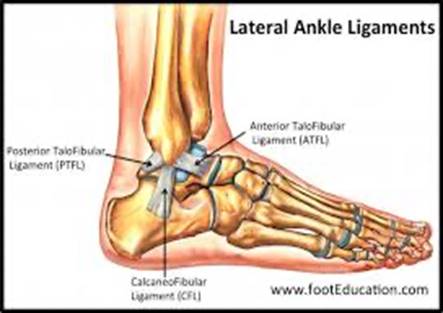
Ankle injuries in dance and some basic rehab exercises
Ankle injuries in dance and some basic rehab exercises
Ankle injuries are one of the most common injuries that we see in dancers of all ages. These range from the minor to the severe. Generally, when a dancer injures their ankle it will be either landing from a jump or when performing pointe work. This will normally mean that the dancer ‘rolled over’ on their ankle causing what would be called an inversion injury.
The lateral or outside part of the ankle contains 3 main ligaments, the anterior talofibular ligament (AFTL), the posterior talofibular ligament (PTFL) and the calcanofibular ligament (CFL), these ligaments act to keep the joint stable.
When an inversion ankle injury occurs it will be given one of three grades:
Grade 1 is mild, with the ligaments being slightly stretched, maybe some very mild bruising and swelling.
Grade 2 is more severe, and means that some ligament tissue has been torn. This will look a lot more swollen and bruised, with the bruising sometimes spreading from the ankle towards the toes.
Grade 3 is when the ligament has fully torn, sometimes you may have heard a popping sound when the injury occurred. It will normally be very painful to begin with, feel unstable when walking and be extremely swollen and bruised, with the bruising spreading through the foot into the toes.
On rare occasions a fracture to the ankle can occur. This will also normally create a large amount of pain, bruising and swelling, but the main indication will be an inability to walk 5 steps unaided immediately after the injury occurred. If you can not walk 5 steps following your injury, it is sensible to get an x-ray to ensure no injury to the bone has happened.
If you have experienced an ankle sprain, its key to get it assessed properly as the initial management and rehabilitation can vary depending on the severity of the injury.
Grade 1
You are fine to walk, as weight bearing will help to strengthen the tissue and speed up the healing process. You want to avoid it becoming stiff, so carry out lots of range of movement exercises. It is also really important to make sure you maintain strength in the supporting muscles of the ankle and practice balance exercises. Within 2-4 weeks most people will have returned to full dance.
Grade 2
For the full extent of injury to be identified, an MRI can be useful as it will enable a projected rehabilitation period. Initially however, to help the swelling, it might be that you need to use crutches for anything from 2 days to 12 days, depending on how painful weight bearing is. During this time, you should aim to keep it elevated, and practice moving the foot to help aid swelling reduction and reduce stiffness. As symptoms allow, it is then vital to perform a progressive rehabilitation plan, which should include non-weight bearing strength exercises, progressing to weight bearing exercises, balance exercises and eventually move dynamic movements before full dance is contemplated. This level of injury can take up to 3 months to return fully to dance.
Grade 3
If a grade 3 injury is suspected, it is good practice to try to get the opinion of an orthopaedic consultant into the expected recovery times. This is likely to require an MRI. It may be suggested that and orthopaedic boot is used to help with mobility. This will normally be used with crutches initially which will be used less as time proceeds. A boot can often be used for around 6-8 weeks. In some severe cases when more than one ligament is ruptured surgery may be advised to help with the stabilisation of the ankle. Following this, a similar rehabilitation process should be carried out to that of a grade 2 injury, just over a longer period. This can take around 6 months to return fully to dance.
The key things to remember when rehabilitating an ankle injury is we need full range of movement, no pain, strength in the muscles of the feet, ankles and calf, along with effective balance or proprioception. Without these we run the risk of either re-injury or injury to another of the lower limbs.
Often we come across dancers who have sprained an ankle previously and either not undertaken or completed a full rehab program before returning to dance or had no assessment of advice and carried out no rehab at all. In these cases, they will often advise ongoing ankle pain but also pain in their shins or knees. Normally, they have restriction in their ankle mobility and poor balance when tested on the affected side due to reduced proprioception and weakness in the intrinsic foot muscles and ankle muscles. Because it is such a common injury, it can often be seen as trivial and one to be worked through. This can have a long term impact on the health of the ankle, and potentially predispose you to other injuries, all of which will ultimately affect performance quality. If you suspect an ankle injury contact a specialist with appropriate experience and ensure you follow a comprehensive rehab program and a graded return to dance.
Around the clock is great for balance and mobility in the ankle:
Vital to improve strength, this selection of exercises helps activate the muscles of the feet and calf including the key supporting muscles of the ankle:

